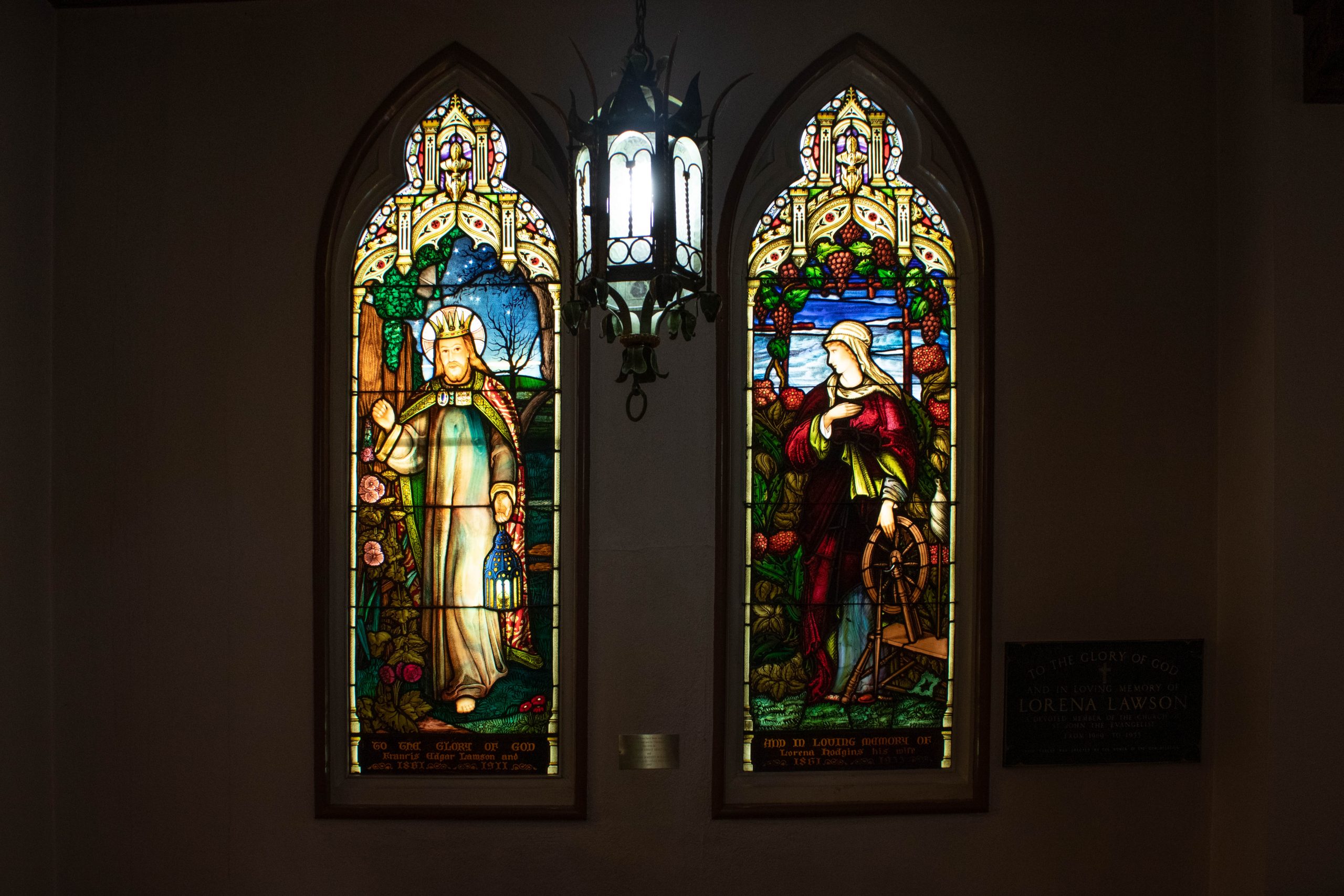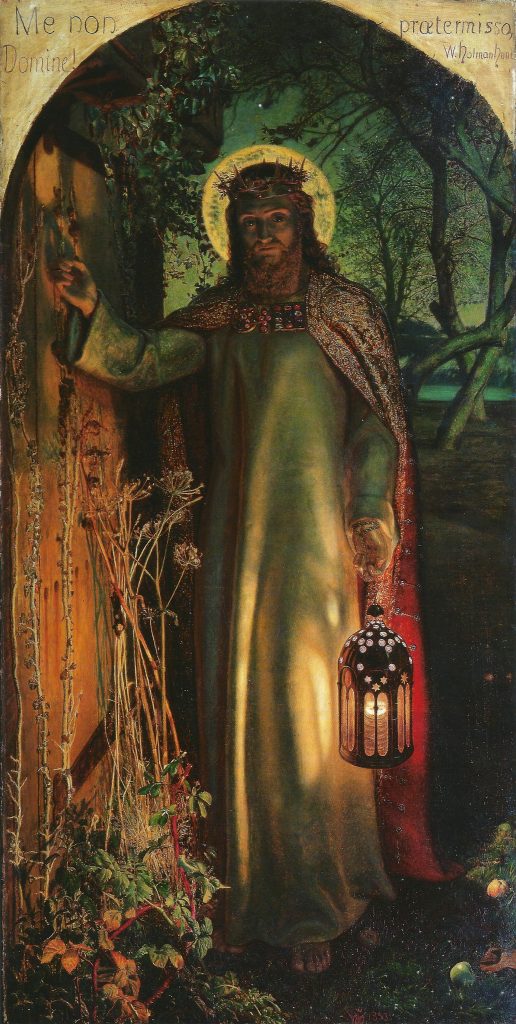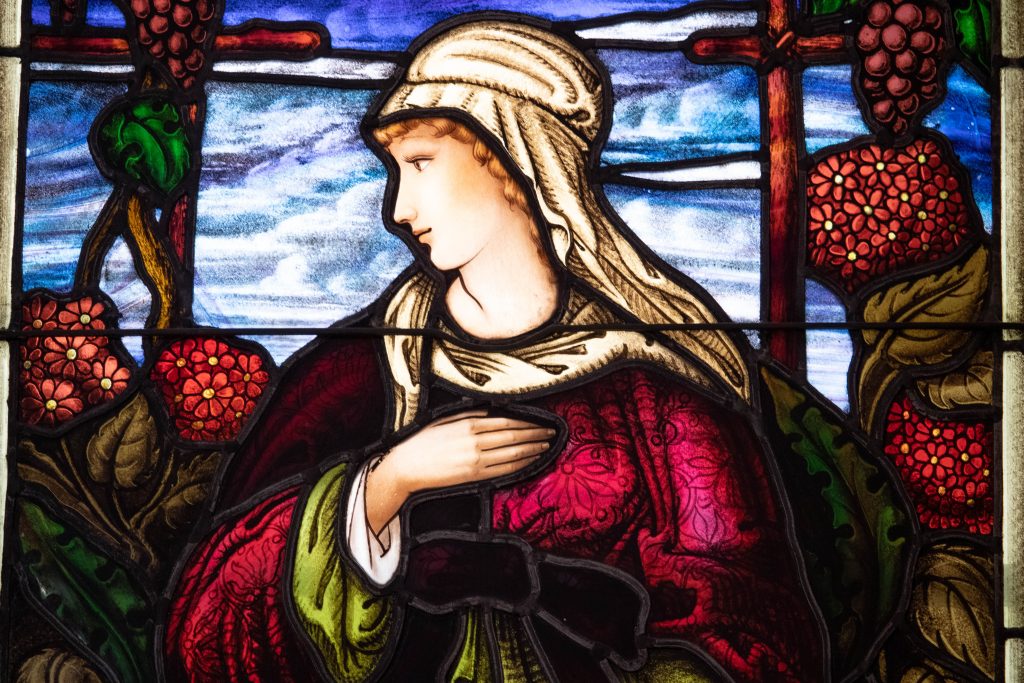12 Hobbs Manufacturing Company, London
Career and St. John the Evangelist
C. Cody Barteet
Hobbs Manufacturing Company (c. 1890-1929) was a large-scale importer and manufacture of glass. The company had locations in London, Winnipeg, and Toronto. Their advertisements note that they produced leaded windows for ecclesiastical purposes, along with stained glass, memorial and portrait windows, and mirrors for both religious and residential locations.[1] Indeed, one of Hobbs’ retail advertisements from 1904 called itself “Canada’s Great Class House” and that it “always [has] on hand a very large stock of window and fancy glass.”[2] Unfortunately, because of the mass production of glass, little is known at the present about the company’s glassmakers.
Bibliography
Spicer, Elizabeth. Trumpeting Our Stained Glass: The Church of St. John the Evangelist, London, Ontario. London: St. John the Evangelist, 2008.

The Light of the World; Woman with Spinning Wheel
Hobbs Manufacturing Company, Ltd., 1934
“To the Glory of God and in Loving Memory of Francis Edgar Lawson, 1861-1911 and Lorena Hodgkins His Wife, 1861-1933).
Donated by the Family
Of the more unique pieces within the St. John’s collection are the two images by Hobbs. The windows draw upon the artistic work of William Holman Hunt, an English Pre-Raphaelite artist. The church’s window is based upon Hunt’s painting of “The Light of the World” (1854) in Keble College, Oxford, England. In Hunt’s image, the light radiates from two sources: the lantern the light of conscience and the halo or the light of salvation. Christ’s left-hand carries a lantern while his right is raised to imply the gesture of knocking, as in knocking on the door of the human soul. The vine-covered door does have an exterior handle, thus suggesting it must be opened from the inside. Here Hunt is adding a pictorial form to the passage from Revelations (3:20): “Behold I stand at the door and knock. If any man hear my voice and open the door I will come in to him and will sup with him and he with me.” The Hobbs’ window is significantly indebted to Hunt’s image. From the use of light to Christ’s halo doubling as the Morning Star to the covered doorway, the work is a copy of Hunt’s original theme.

The flanking image is that of a “Woman with Spinning Wheel.” As Elizabeth Spicer, the one-time parishioner and historian of the parish, notes that the image was chosen to honour Lorena Hodgkins for his tremendous work at St. John’s Women’s Guild and St. John’s Women’s Auxiliary of the Missionary of the Anglican Church of Canada[3].


[1] “Hobbs Manufacturing Company, Ltd.” The London Board of Trade: Fiftieth Anniversary, 1857 –1907 (Annual Report, 1907), 101.
[2] “Canada‘s Great Glass House,“ The Retail Merchants’ Journal of Canada (July 1904), 162.
[3] Elizbeth Spicer, Trumpeting Our Stained Glass Windows (London: St. John the Evangelist, 2008), #22.

